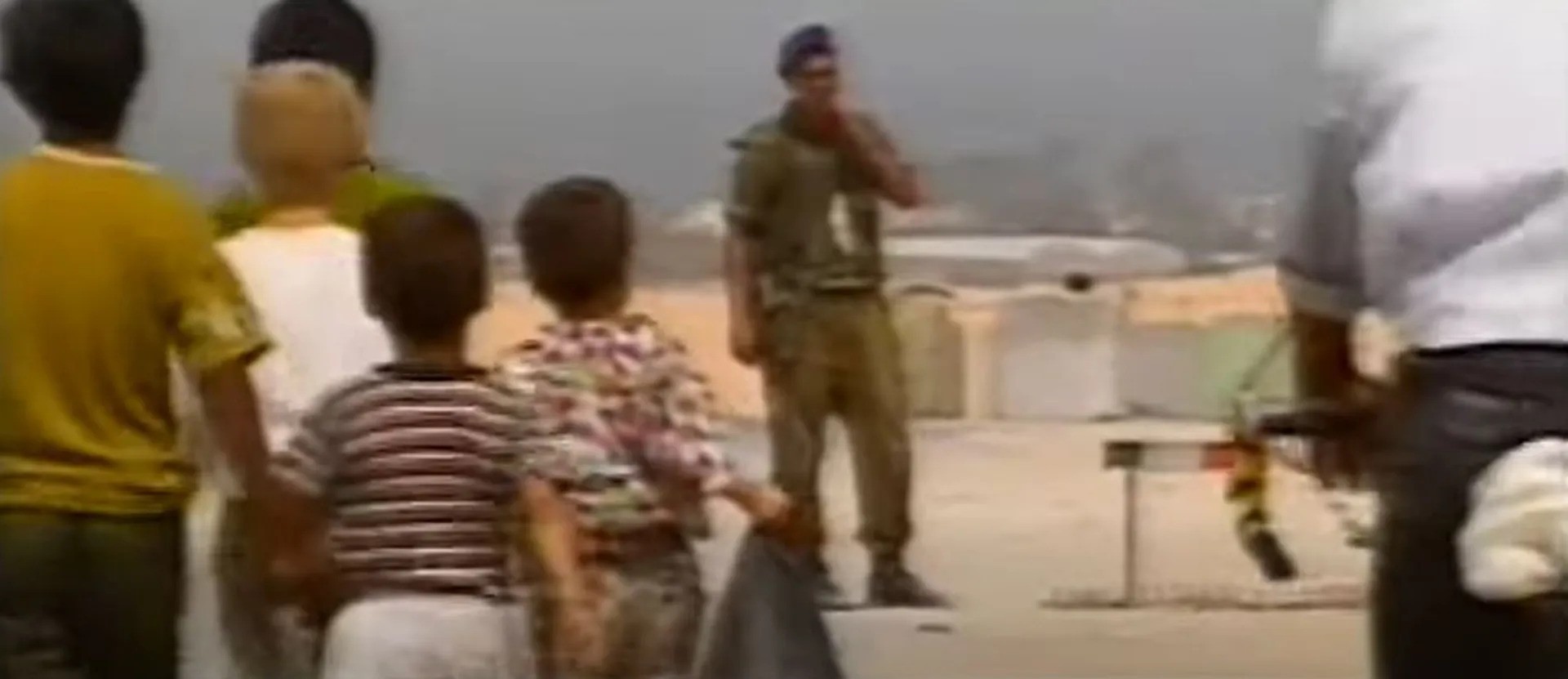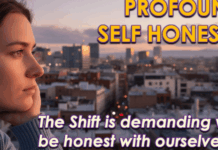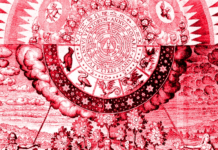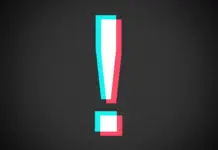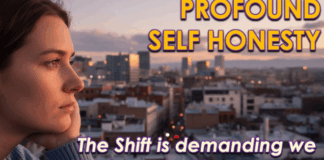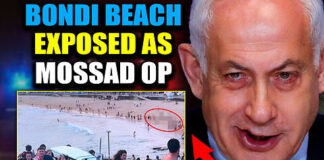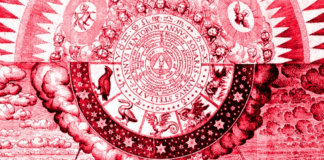By Shany Littman,
Watching Ram Loevy’s 2003 documentary ‘Seger’ is almost unbearable. It offers conclusive proof that Israel should have known where its blockade of Gaza was heading.
One of my strongest childhood memories is watching a film on Israel’s only television channel at the time. It was the final scene from Ram Loevy’s 1986 drama “Bread.”
In it, the protagonist Shlomo – who is on hunger strike, having locked himself away at home since the closure of a bakery from which he was fired – is lying on a narrow bed facing the wall. His wife comes to inform him that the bakery has reopened and they want him back. But Shlomo doesn’t respond. The news has come too late: he’s dead.
That was the first time I ever saw a film with an unhappy ending. Until that moment, I didn’t know that films could be so sad.

Loevy, as a creator of both movies and television, has always been committed to the sociopolitical – in his documentaries, of course, but also in his full-length features.
Throughout his career he has focused chiefly on painful public issues, out of what seems less a self-important sense of mission and more a sense of necessity. It is a consequence of the clear-eyed gaze, the required protest, the soul-searching. Because how can one deal with anything else when the house is on fire?
The political situation he documented hasn’t changed for the better, but shockingly has only deteriorated over the decades. In 2001 and 2002, at the height of the second intifada, he made a film about Gaza – which was not yet under the rule of Hamas but was suffocating behind a blockade imposed by Israel due to the fear of terror attacks. Ostensibly, anyway, but there were other motives as well. Gaza was under blockade way before the known blockade of 2006, since Israel built a fence surrounding it in the mid ’90s, controlling who comes in and who gets out.
The Gaza Strip still had Israeli settlements (the Gush Katif bloc) at the time, and the Gazans were dependent on the Israeli government and its caprices for their livelihood and freedom of movement. In the film, which is called “Seger” (“Closure,” aka “Close, Closed, Closure” in English) and was made in cooperation with the Israeli human rights organization B’Tselem, Loevy entered Gaza several times over a period of months.
His narration accompanies the film, with impressions from both sides of the barrier and a total understanding of the seeds of disaster that were planted and continue to bloom in the world’s largest prison – which Israel created with its own hands.
“Israel’s glorious victory in the Six-Day War will in the final analysis lead to the end of the Jewish state,” says Loevy at the start of the film, quoting Polish-Jewish historian Isaac Deutscher’s terrifying prophecy that was made just days after the end of the June 1967 conflict.
Loevy admits that entering Gaza is quite a frightening experience and that he relies on the local film crew that accompanies him. In Gaza, he meets residents who are desperate, poor, without any future.
Through the story of a single family, we get a better understanding of the absurd existence of the Palestinians in Gaza, and start to wonder how they aren’t going crazy.
It’s the Sultan family: mother Najwa, father Fadl and their 9-year-old son Mohammed. His two legs were amputated due to an illness that wasn’t treated in time. When his parents wanted to take him by ambulance to Israel, it turned out that both were banned from entering – the mother because she was detained in the past for throwing a Molotov cocktail, and the father because Israel didn’t grant entry visas to men of his age.

Najwa is angry and doesn’t hide it, and a later meeting with Loevy comes to naught. Fadl and Mohammed, on the other hand, try to view life more optimistically and refuse to surrender to despair.
At the beginning of the film, Loevy speaks to several left-wing activists, residents of the Gaza border communities who would demonstrate regularly every Friday afternoon against both the occupation and settlement in Gush Katif. The most prominent interviewee among this group is a mustachioed, straw hat-wearing kibbutznik from Nir Oz called Chaim Peri.
Peri, a sculptor, artist and film teacher who was in his late 50s during shooting, never tires of conducting stormy discussions every Friday, under the burning Negev sun, with settlers from Gush Katif and right-wing demonstrators who come to stand at exactly the same intersection.
On October 7, he was taken hostage by Hamas along with many of his friends from Nir Oz. Last month, the Israel Defense Forces reported that he had died in captivity; he was almost 80 at his death. It’s heartbreaking to see Peri so full of life, with the optimism he demonstrates in order to prevent bloodshed near his home, and in light of the terrible realization that he tried and didn’t succeed in preventing his own death.

This Wednesday, Tel Aviv Cinematheque will present a special (sold out) screening of the film followed by a discussion in Peri’s memory.
And what has happened to the Sultan family since October 7? Nobody knows.
The memory of the memory
Israeli society has a very short memory. Documentarians like Loevy are aware of that, fill in the blanks, and turn themselves into creators and guardians of memory for those who tend to forget. That’s why watching his film today is almost unbearable. The film is clear proof of the fact that all the information was there, and it wasn’t too hard to understand where all this was going and what was likely to happen if Israel continued to keep Gaza and the Gazans under its boot.
“Seger” is a resounding response to the faux-naive question that arose repeatedly on October 7, in a shocked tone: But why did the Gazans choose Hamas rule? Why why didn’t they strive for economic prosperity and a quiet life, instead choosing to invest their energy in nurturing terror?
In addition to talking with Gazans who are living under the suffocating closure, kibbutzniks demonstrating opposite the border fence and Gush Katif settlers with a passionate belief that Israel cannot give up an inch of the land that was promised to the Jews in the Bible, Loevy also drifts into cinematic contemplation.

For instance, when he films scrap iron near the fence at Nir Oz – junk that was once an army vehicle whose driver was killed in a road accident on the first day of the Six-Day War – he says: “When you turn a camera on an object, the object changes. A discarded jeep loses its rusty existence and becomes a symbol. And the symbols, mainly the bloody ones, prevent us from seeing reality as it is. Maybe we have to go back and see things as things: a jeep as a jeep, a tree as a tree. An idiotic idea: it’s impossible to see things without their significance. There’s a war. At best, we can try to see them differently.”
Someone also has to preserve the memory of the memory, and Loevy, now 84, recently transferred his archive to the Israeli Center for the Documentation of the Performing Arts in Tel Aviv University’s Faculty of the Arts.
Loevy’s approach, both socially and politically, position him as a highly ethical artist with an important social conscience.
Prof. Eran Neuman
This is an important project that operates in conjunction with the National Library of Israel, which in recent years has been rescuing and safeguarding the archives of Israeli artists from a variety of fields. These include painter Arie Aroch, abstract artist Lea Nikel, artist-writer Yair Garbuz, artist Ziona Tajar and painter-sculptor Naftali Bezem.
The dean of the arts faculty, architect Prof. Eran Neuman, says the archive assembled by Loevy – who won the Israel Prize for Communication, Radio and Television in 1993 – includes footage from the cutting-room floor. The materials are currently being made accessible digitally.
“I’m not a film person, but I also remember ‘Bread’ having a big impact on me as a boy,” says Neuman. “Loevy’s approach, both socially and politically, position him as a highly ethical artist with an important social conscience,” says Neuman.
He also mentions Loevy’s 1978 film “Khirbet Khizeh” (based on the story by author S. Yizhar), which when broadcast on television caused an uproar that involved the education minister and the High Court of Justice.
It was the first time someone on Israeli television had dared deal with the expulsion of the Palestinians in 1948. “During that period, there were other artists in other fields who were very political and weren’t ignoring what was happening here, such as Micha Bar-Am in photography and Hanoch Levin in theater. But in cinema, and especially in television, they found it hard at first to air Loevy’s work. It was hard for people to digest.”
Source: https://www.haaretz.com
Disclaimer: We at Prepare for Change (PFC) bring you information that is not offered by the mainstream news, and therefore may seem controversial. The opinions, views, statements, and/or information we present are not necessarily promoted, endorsed, espoused, or agreed to by Prepare for Change, its leadership Council, members, those who work with PFC, or those who read its content. However, they are hopefully provocative. Please use discernment! Use logical thinking, your own intuition and your own connection with Source, Spirit and Natural Laws to help you determine what is true and what is not. By sharing information and seeding dialogue, it is our goal to raise consciousness and awareness of higher truths to free us from enslavement of the matrix in this material realm.
 EN
EN FR
FR

